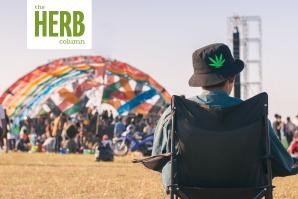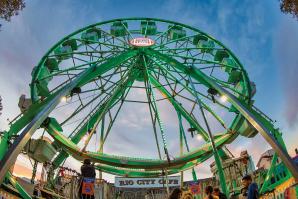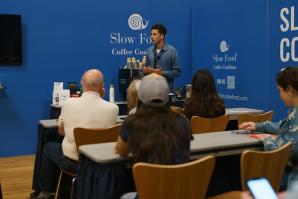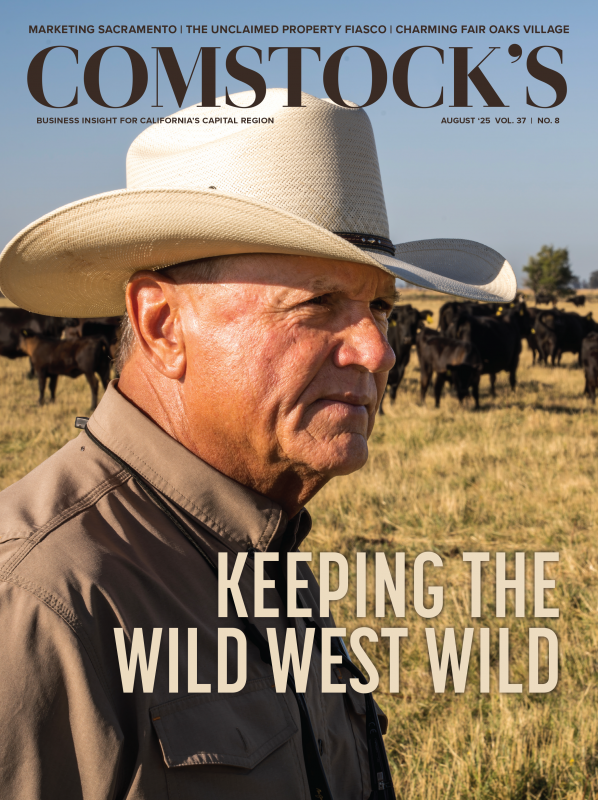A young couple wake up and turn to each other: “So, this weekend, do you wanna…?” Images of concerts, games and fine dining dance through their heads before they each land on the same idea. “Are you thinking what I’m thinking?” Both exclaim in unison: “Sacramento!”
It’s an ad designed to surprise viewers and challenge perceptions, part of Visit Sacramento’s efforts to position the city as a food and festival destination, perfect for a quick weekend getaway or an overnight stay.
“We don’t have a Statue of Liberty. We don’t have a Golden Gate Bridge,” says Mike Testa, CEO of Visit Sacramento. “So it’s up to us to create the demand for the market, and we do that through a lot of the events we create.”
Who’s visiting
Often described by its proximity to other places, Sacramento actually sees significant traffic each year from out-of-town visitors. From Gold Rush enthusiasts and student groups touring the Capitol, to conference attendees, concertgoers and weekenders arriving for a festival or a game, the city welcomed over 15 million visitors last year, generating more than $4 billion for the economy. “Tourism is a real thing here,” says Testa.
Visit Sacramento targets the “drive and fly” market — travelers who might drive or fly in for a short trip — through many of their ads, which are currently running in other cities. A 2020 campaign called “Wake Up” featured a short video inviting viewers to “wake up somewhere new” by visiting Sacramento, at a time when many restaurants were just beginning to reopen.
SMF’s efforts to lure tourists
It’s a busy summer at the airport, says Stephen Clark, deputy director of development for the Sacramento International Airport. Their Senior PIO Scott Johnston reports a record number of over 13 million passengers in 2024.
The airport serves a seven-county region, and while it does use social media to target family vacationers, girls’ weekends or business travelers, Clark says their overall marketing focuses on a more data-driven approach. “We’ll look at habits that align with likely travelers, like wine and leisure,” he shares.
For people coming into Sacramento, many times the airport markets to an international audience, Clark says, where the focus is on the city’s proximity to other places like Lake Tahoe and Amador County.
“We don’t have a Statue of Liberty. We don’t have a Golden Gate Bridge. So it’s up to us to create the demand for the market, and we do that through a lot of the events we create.”
— Mike Testa, CEO, Visit Sacramento
Their most visible campaign, he says, is a video spot called “Thank You, NorCal,” showing a montage of iconic California landscapes with a voiceover thanking viewers for pushing them to do better. “Now, who’s ready for the next leg?” it asks. “It’s kind of a love letter to the region,” he says. And a nod to what comes next.
Part of Clark’s job is to connect with travelers not only coming into the city but also making the choice of where to fly out from. “Let’s say we’re trying to plan a trip together, and we’re sitting at our house in Napa,” he says. “We have to make a choice to go left to SMF or right to SFO. My job is to make sure you go left!”
Part of that is pursuing international nonstop flights, he says. “So maybe that’s a little hint of what I was doing in Taiwan,” he quips, having recently returned from travel.
The ongoing $1.3 billion expansion project called SMForward will include improvements like a new pedestrian walkway, more parking, gates, and ticketing areas. “I feel like recovery mode is over,” says Clark. “We’re in growth mode now, which is remarkable.”
Highlighting the flavor of a region
The city has embraced its agricultural roots since adopting the “America’s Farm-to-Fork Capital” slogan 12 years ago. “When we position Sacramento as a destination, a lot of it’s around agriculture and locally-sourced food that you’re not going to get anywhere else in the country,” Testa says. He cites restaurants like The Kitchen and Localis earning stars in the Michelin Guide, along with nine other restaurants recognized.
The popular Farm-to-Fork Festival is merging this year with the
new Terra Madre Americas, an international food festival that
will be held September 26-28. (Photo by Francisco Chavira)

This fall brings the Tower Bridge Dinner, followed by the Farm-to Fork-Festival, which is merging with Terra Madre Americas — a three-day culinary festival featuring live music, vendors and celebrity chef demonstrations. So Testa feels like the city is headed in the right direction.
“Slow and steady wins the race,” he says. “I think we’re doing great, because when the New York Times or Wall Street Journal is writing about us, they’re not talking about the Gold Rush of 1849, they’re talking about the food scene in 2025.”
A festival city
From SacAnime and Ironman to Aftershock, the reimagined GoldenSky Music Festival and the upcoming Holo Holo island and reggae music festival, events and concerts have become a huge economic driver for tourism in the city.
“Aftershock is a great example of that,” explains Testa, who says Aftershock is a “destination festival” that draws attendees from 32 different countries. Last year, the rock, punk and heavy metal music event drew nearly 160,000 people over four days, with 67 percent coming from outside the region. Hotels were booked out, and the festival generated over $31 million for the local economy.
Staying the weekend
While city-led festivals help shape Sacramento’s public image on a broader scale, the Kimpton Sawyer Hotel on J Street creates a buzz downtown by promoting a young, sophisticated vibe on social media and marketing the hotel to its Instagram followers as an urban retreat with deals tailored to weekend travelers, locals looking for a staycation and groups visiting for games or events.
The 250-room hotel built in 2017 was recently praised in Travel + Leisure magazine and regularly hosts seasonal events that cater to both locals and visitors. Director of Operations and General Manager Nikki Glass says the hotel has partnered with promoters for events like GoldenSky to host kickoff parties at their rooftop pool. “Festival season is a huge draw,” she shares. “It’s something we definitely anchor ourselves to as far as marketing and programming … creating a vibe and leaning into what’s going on in the city.”
With the Athletics temporarily calling Sacramento home through 2027, many hotels like the Sawyer are centering their promotions around game days, offering perks such as merchandise for kids and shuttle service to the ballpark.
Kitsch and community
Just a few streets over from the Golden 1 Center is the HI Sacramento Hostel, a big yellow Victorian built in 1849 that offers a mix of colorful dorms and private rooms with unique architecture and details throughout the house. The hostel is part of Hostelling International, a non-governmental agency that works with the United Nations. Per hostel policy, you can’t stay at the hostel if you live in Sacramento to allow room for international visitors and young explorers on a budget.
The HI Sacramento Hostel is located in a beautiful 1849 Victorian
that attracts 10,000 guests a year. (Photo by Robin Douglas)

The hostel attracts a diverse mix of guests — from concert attendees, festival goers, school groups, state employees, conference and convention attendees, to hikers on their way to other destinations. “We once had a group who flew out from Japan just to see an A’s game,” says Andrea Carvey, general manager.
Rooms are generally in the $100 range, and Carvey says people typically find them through listings on sites like HostelWorld.com and online travel agents like Booking.com. The hostel had over 10,000 guests in 2024, according to Operations Vice President Daniel Case, about 22 percent international. “Unlike bigger cities, it’s much more of a California regional-based travel market for Sacramento,” he says.
People often have misconceptions about staying in hostels, Carvey and Case say. “But I think people really enjoy the communal atmosphere here,” says Case. “We really do get to sit around and have coffee in the morning and chat with people from around the world. On one weekend, we had 10 different countries represented here. And that was just a regular weekend.”
–
Stay up to date on business in the Capital Region: Subscribe to the Comstock’s newsletter today.
Recommended For You

The Herb Column: Could Sacramento Attract Cannabis Tourists?
Inviting visitors who want to sample product could be a boost — but city leaders aren’t yet onboard
Luke and Eliza Maroney want to bring more buzz to Sacramento, and not just the kind they sell. They’re spouses and partners in Lucky Box Club, a subscription service delivering curated cannabis products to customers monthly. But they’re out to fuse weed and other concepts too.

Silver Linings
The pandemic has crushed most of the tourism industry, but some businesses have defied the odds
While many small and not-so-small businesses were roiled, some
have seen a windfall with people desperate to hop in their cars
and do something, anything, besides cook another dinner at home
and watch more Netflix.

Sacramento Goes Global With New Food Conference
Terra Madre has potential to shine a ‘huge culinary spotlight’ on the city
Sacramento will serve as the site of a prestigious international food conference that could eventually bring thousands of tourists and millions of dollars into the region.

California’s Tourism Industry Could Be a Boon for Local Communities
California continues to surf a huge economic wave with year-after-year tourism growth, generating more than $140 billion for the state last year and supporting the livelihoods of millions of residents. But as any big wave surfer knows, the thrill of success also comes with perils, and in the case of tourism, the situation can get gnarly fast.




